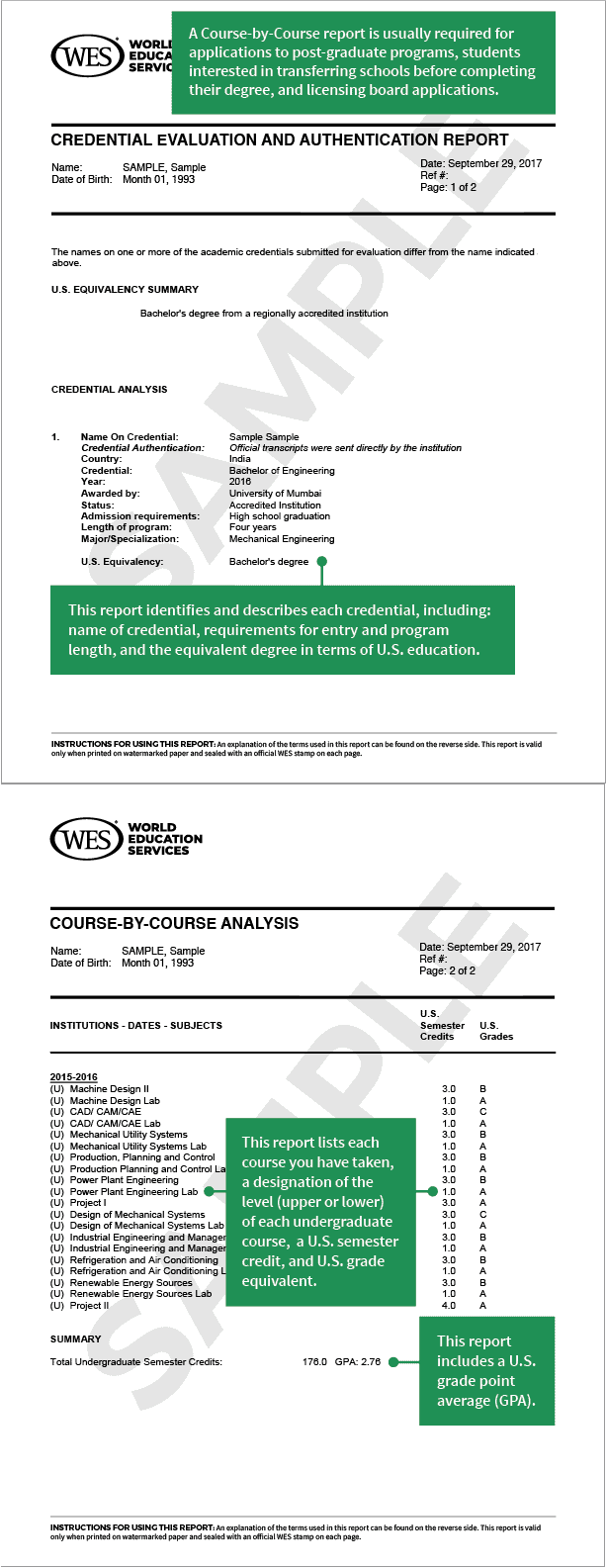Why Should International Students Get a Credential Evaluation?
Tuesday | April 8, 2014 | by Sangeetha Shanmugham

A credential evaluation converts the academic credits or degrees that you earned overseas to their equivalencies in the U.S. or Canada.
At the end of the process, you’ll receive a credential evaluation report. This report is easy to understand for people who are only familiar with education systems in North America. It can help them interpret your grades and accomplishments.
The following image shows a sample of a report that displays your education Course-by-Course:
What Is the Benefit of a Credential Evaluation?
Educational systems around the world vary significantly, so an accurate and objective analysis of how a foreign educational credential compares to the U.S. system can be very beneficial.
For example, a credential evaluation report can help university admissions officers take your prior education and experience into account. The time and energy that you have already invested in your education can only achieve their full impact on your future if your academic credentials are understood and recognized correctly.
Who’s Responsible for Credential Evaluations?
In the United States, there’s no single agency or authority (such as a Ministry of Education) that’s responsible for foreign credential evaluation. Some organizations (for example, employers, licensing boards, universities) do their own evaluations, but most of them rely on an independent credential evaluation service such as World Education Services to provide them with an evaluation report.
What Are the Different Kinds of Evaluation Reports?
In general, an individual can request a “basic” credential evaluation that describes the credential, or a “detailed” (sometimes called a “Course-by-Course”) report that provides additional information on the student’s grades, credit hours, and course content. Credential evaluations consider the value of the credential in the context of the country’s educational system, whether the university is recognized, credential name, entrance requirements, program length, major/specialization, and the date it was awarded. The evaluation report includes all of this information about the original credential, along with the U.S. equivalency.
For an additional cost, a detailed report will analyze each course on the transcript, and convert credit hours, grades, and course levels to their U.S. equivalents. Some agencies will calculate a Grade Point Average (GPA), which is the standard way of reporting academic achievement in the U.S. However, a Course-by-Course evaluation is almost always necessary when an individual is applying for transfer credit, or a graduate degree.
How Much Does an Evaluation Cost?
The cost of an evaluation depends upon many factors—the degree of detailed analysis required for your purpose, whether or not an agency charges for each credential it evaluates, processing time, etc. Fees for “basic” reports typically range from $70 to $150 USD; “detailed” reports range from $150 to $350.
How Are Foreign Credentials Evaluated into the U.S. Equivalency?
Agencies use a variety of research tools and resources to determine the status of international academic institutions and to assess an individual academic achievement with the U.S. system and standards of education.
Does Everyone Recognize the Results of Credential Evaluation Reports?
No. Evaluation reports are advisory and not binding on any institution. Ultimately, the institution receiving the credentials has the authority to make the final decision on how they’ll recognize the credentials and isn’t bound by the opinions and recommendations of the evaluation service–even if they require or recommend the service.
